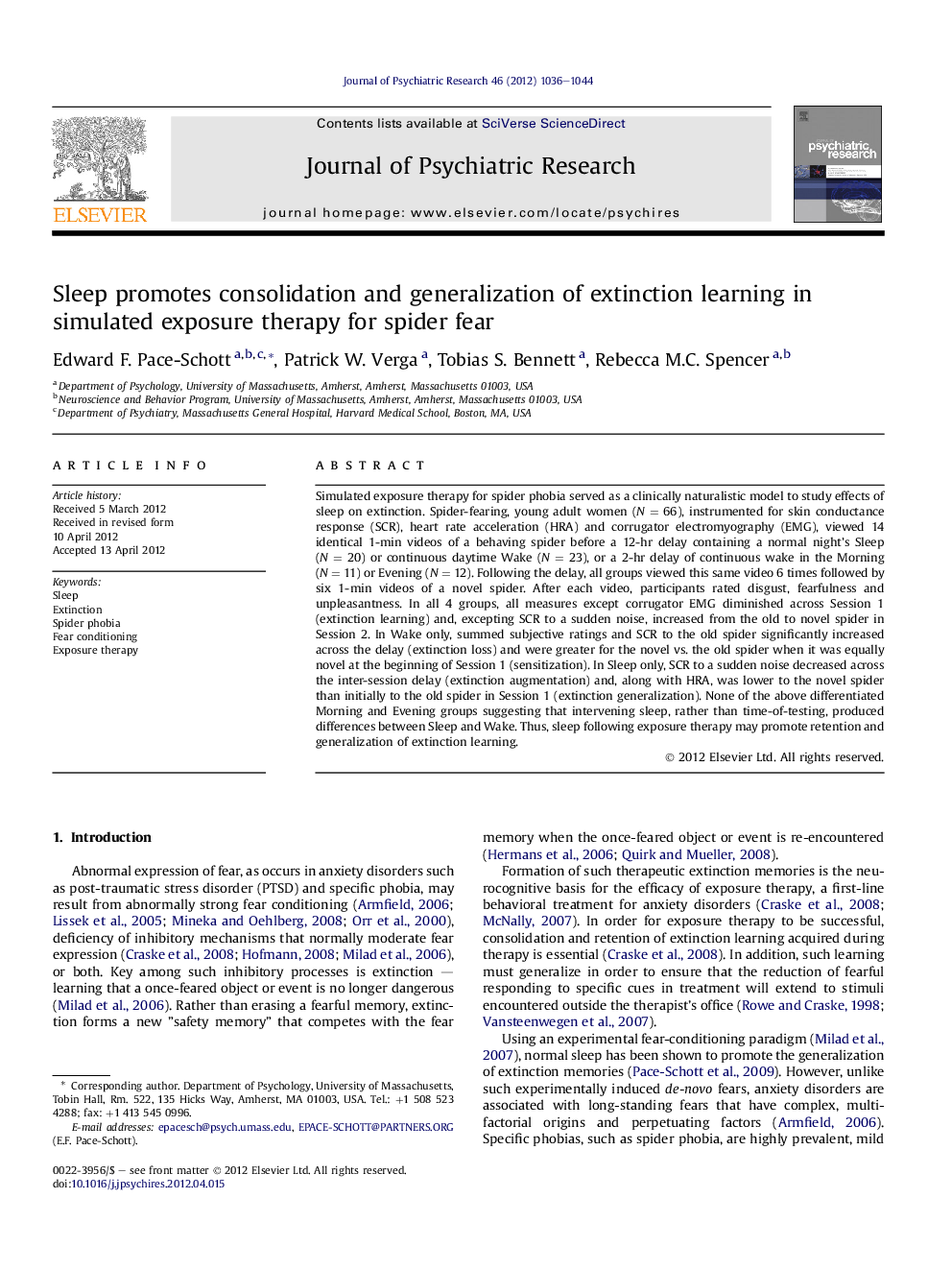| Article ID | Journal | Published Year | Pages | File Type |
|---|---|---|---|---|
| 327065 | Journal of Psychiatric Research | 2012 | 9 Pages |
Simulated exposure therapy for spider phobia served as a clinically naturalistic model to study effects of sleep on extinction. Spider-fearing, young adult women (N = 66), instrumented for skin conductance response (SCR), heart rate acceleration (HRA) and corrugator electromyography (EMG), viewed 14 identical 1-min videos of a behaving spider before a 12-hr delay containing a normal night's Sleep (N = 20) or continuous daytime Wake (N = 23), or a 2-hr delay of continuous wake in the Morning (N = 11) or Evening (N = 12). Following the delay, all groups viewed this same video 6 times followed by six 1-min videos of a novel spider. After each video, participants rated disgust, fearfulness and unpleasantness. In all 4 groups, all measures except corrugator EMG diminished across Session 1 (extinction learning) and, excepting SCR to a sudden noise, increased from the old to novel spider in Session 2. In Wake only, summed subjective ratings and SCR to the old spider significantly increased across the delay (extinction loss) and were greater for the novel vs. the old spider when it was equally novel at the beginning of Session 1 (sensitization). In Sleep only, SCR to a sudden noise decreased across the inter-session delay (extinction augmentation) and, along with HRA, was lower to the novel spider than initially to the old spider in Session 1 (extinction generalization). None of the above differentiated Morning and Evening groups suggesting that intervening sleep, rather than time-of-testing, produced differences between Sleep and Wake. Thus, sleep following exposure therapy may promote retention and generalization of extinction learning.
